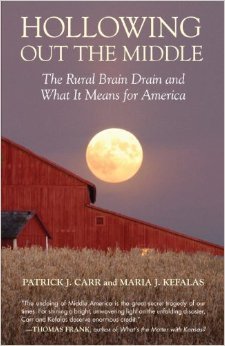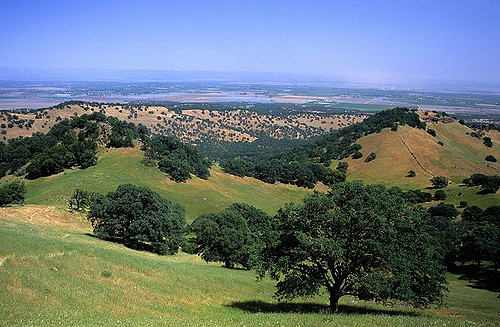Much has been written about how the results of this year’s Presidential election reflected the feeling on the part of people who live in rural areas and small towns that they have been overlooked and that the severe problems in those areas have not received sufficient attention by public and business leaders.
This Washington Post story, sub-headed “How an electorate fed up with the elite propelled Donald Trump to victory”, is a good example.

Although we frequently hear that 80% of Americans live in cities now, that still means there are 60,000,000 Americans in the countryside – not an insignificant number as we saw last month.
Even the news stories that feature broad economic trends don’t highlight the uneven nature of those trends in these areas. For example, the decline in manufacturing employment was a standard talking point on the recent campaign trail. But many observers seem to have forgotten that many bigger manufacturing plants had long since departed cities for the countryside. So when manufacturing employment declined, it hit the countryside more deeply, even while that pain was less visible.
So, sadly, the feeling in rural America of being forgotten is not unfounded.
To make matters worse, in too many small cities and rural areas, many people speak negatively of the prospects for the area. This helps create a downward spiral by persuading the brightest young people to leave.

As sociologists, Patrick J. Carr and Maria J. Kefalas, wrote in their 2009 book, “Hollowing Out The Middle:
“The biggest question facing anyone who grows up in a small town is whether he or she should leave or stay. A little further down the road, those who make the initial decision to leave, usually after graduating high school, must decide whether to return to the cozy familiarity of their hometown or to continue building lives elsewhere. The fact that this small-town rite of passage should be so intimately bound up with the very future of the Heartland allows us to see how the hollowing-out phenomenon plays out in the lives and decisions of young people, and how their pathways are shaped by the communities and people who surround them as they grow up.”
“The Heartland’s most valuable export is not crops or hogs but its educated young people.”
For the last couple of years, I’ve been working with the Intelligent Community Forum helping these communities to take advantage of new opportunities open to them in a new century in which close physical proximity of millions of people is not necessarily the only strategy for economic success.
I’ve written before about how technology enables rural residents to take advantage of the kind of resources that you used to be almost exclusively available to residents of big cities — global economic connections, education and culture, even world-class health care — while maintaining the quality of life that draws them or keeps them in the countryside.
With all this on my mind a few weeks ago, I was asked by the Aspen Institute to keynote a community dialog in Sutter County (Yuba City), California. This was part of my participation in the small working group advising Aspen’s project on the future of libraries.

Although Sutter County is not, by any means, among the most devastated of rural communities, it is still concerned about its future. My observation was that they had some strong assets that are otherwise underappreciated in the conventional economic development perspective.
First, I was impressed by the local leadership, which seemed to have its act together. Leaders who have vision and an understanding of where the world is going are essential for community development.
Second, they have a diverse population, with a variety of experiences including an understanding of entrepreneurial success. Like some other flourishing small cities around the country, Yuba City also has its immigrant groups. It is, for example, known all over North America and India for its long-established Sikh community, which draws tens of thousands of people to the city each year – and can be a connection to the global economy.
Third, they have a library that is prepared to play its role as the central institution of the knowledge economy and help the residents of Sutter County take advantage of new opportunities that I see in a new connected countryside. Much of the Aspen workshop/dialog was focused on the steps the library can take to make this a reality.
It will be interesting to see how well Sutter County achieves its vision and what other communities can learn from it.
And, perhaps for a short time, the situation in the countryside will get a little attention among public officials and the media. But even being remembered, once in a while, really isn’t much of a program.
While Sutter County and places like it across the country are trying to assure their future, it would be easier if national policy recognized and helped them respond to the socio-economic-technological challenges and opportunities facing them. More than merely reducing the sense of being forgotten, it could help accelerate a renaissance in the countryside.
© 2016 Norman Jacknis, All Rights Reserved
[http://njacknis.tumblr.com/post/154180196592/doing-more-than-just-remembering-the-forgotten]
